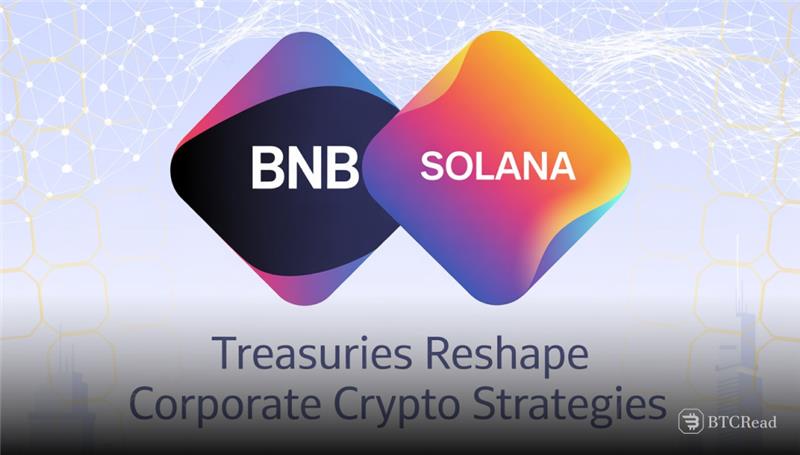The rise of Digital Asset Treasury companies reflects a new phase in how capital markets interact with crypto. These firms are not exchanges or miners but public companies that hold digital assets such as BNB as core balance sheet items.
They raise funds through share issuance or private placements and then allocate capital into tokens such as Bitcoin, Ethereum, BNB, or Solana. In some cases, they expand holdings with staking, liquidity management, or ecosystem investments. The model started in 2020 when MicroStrategy introduced its Bitcoin strategy.
The company demonstrated that corporate treasuries could allocate to crypto in a structured and transparent way. Soon, Ethereum became part of the story, as companies began holding ETH alongside BTC. Over time, new capital moved into other assets such as BNB and SOL.
The trend grew into a split approach: Asian groups focused on BNB, while Wall Street institutions leaned toward Solana. On the BNB side, activity accelerated in Asia and surrounding regions. Bhutan’s Gelephu Mindfulness City integrated BTC, ETH, and BNB into its reserve framework.
BNB treasury positions expand across firms
Companies such as Nano Labs, CEA Industries, and Liminatus Pharma committed significant resources to building BNB positions and related strategies. Their methods include direct accumulation, equity financings, and ecosystem partnerships.
New listings like BNB Network Company positioned themselves as large-scale treasury firms dedicated to BNB, with strong institutional participation. Solana became the center of a different wave in the United States. Investment banks and funds structured treasury firms through mergers, reverse takeovers, and warrant-based financings.
Pantera Capital and other groups advanced deals aimed at converting listed companies into Solana-focused treasuries. Collective institutional holdings now number millions of tokens, with a portion already staked. The presence of banks such as Cantor Fitzgerald highlights how Wall Street treats Solana not only as a high-growth asset but also as a vehicle for engineered treasury models.
Transparency and custody remain key for DATs
Despite the growth, the treasury approach introduces structural risks. Purchases often occur through discounted sales, over-the-counter transactions, or allocations tied to token lockups. This means not all reserves represent new demand in the open market. Investors also face challenges such as dilution, governance shifts, or delayed disclosures.
Public treasury companies often trade at premiums to their actual token value, creating volatility that narrative-driven headlines can amplify. The rise of DAT firms shows how digital assets are moving deeper into corporate finance. From Asia to the United States, companies now use public listings as a bridge between equity markets and crypto reserves.
The long-term sustainability of this model depends on greater transparency, verifiable custody, and accountability. Without these, treasury strategies risk remaining more of a financial story than a stable foundation for asset allocation.







